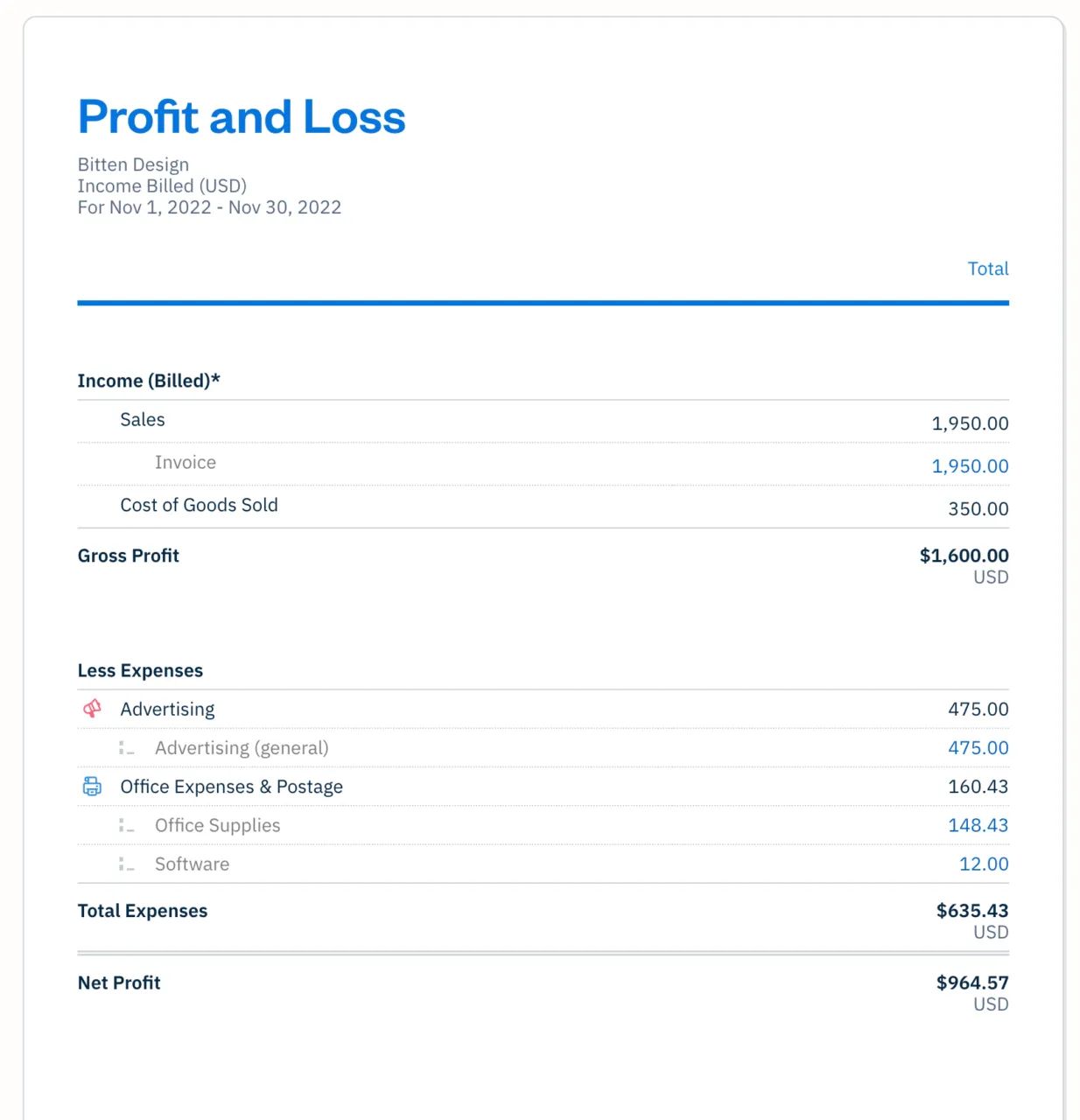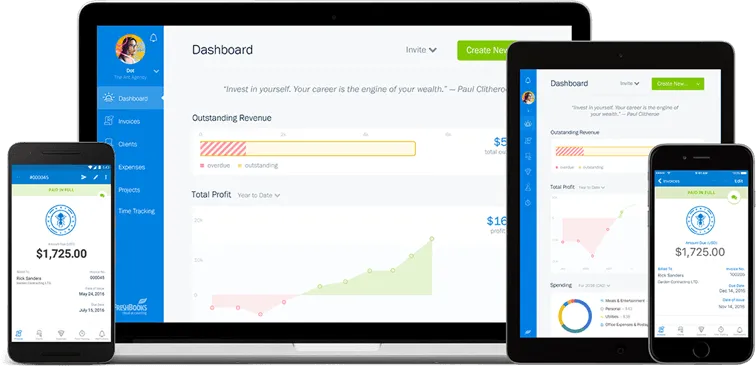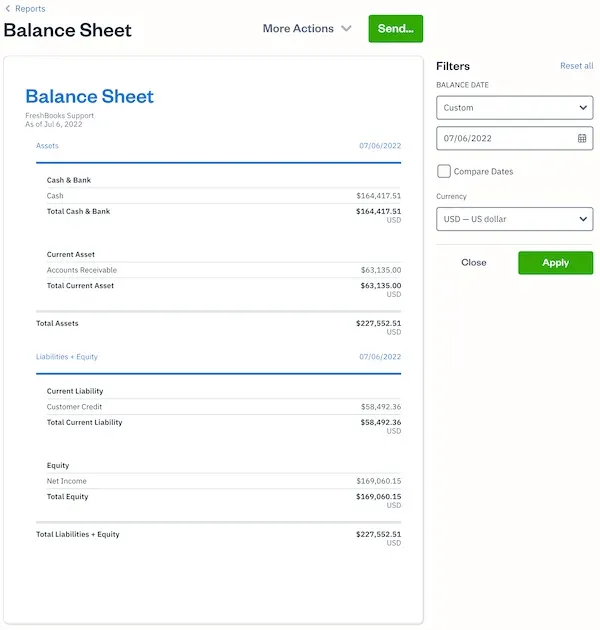How to Know If a Company is Profitable – 5 Profit Metrics

Understanding profitability is essential to growing your business. When you regularly measure your profits, you can identify problems before they escalate and create strategies to resolve them.
However, many small business owners may not feel confident monitoring the overall financial health of their business. There are many reports to run and numbers to check; it can be hard to know what to track. This article is a quick primer on staying on top of the big picture, so you can ensure your company is profitable today and learn how to grow your profits in the future.
Key Takeaways
- Tracking profitability is essential to maintaining the financial health of your business.
- There are 5 key indicators of profitability: net profit margin, gross profit margin, operating expenses, per-client profit, and future projects
- By keeping track of these indicators, you can identify any areas where your profit may be falling behind.
- Your break-even point helps you understand how your expenses and revenue interact.
- This is useful for planning your future business strategy
In this article, we’ll cover the following:
- 5 Key Indicators To Measure a Company’s Profitability
- Break-Even Analysis
- Statistical Analysis of Returns
- Conclusion
- Frequently Asked Questions
5 Key Indicators To Measure a Company’s Profitability
1. Check Net Profit Margin
Net profit is key to determining your company’s profitability. Use this simple formula to calculate net profit:


For example, a business with revenue of $75,000 per year and $15,000 in expenses has a net annual operating profit of $60,000.
This simple how-to guide can help you learn more about expense and revenue tracking to calculate net profits on your own. Accounting software makes this process very simple as it automatically generates a profit and loss statement for your business. Profit is the last line on the report, as you can see in the example below.

It’s important to look not only at profits on an annual basis but every month too. Check the profitability of the previous month on the first of the next month. How is your operating profit margin ratio now trending? Is it about the same every month? Is it increasing or decreasing (and how fast)?
Now you can predict future profit and correct course if your profit is flatlining or taking a nosedive.
2. Calculate Gross Profit Margin
Gross profit is an important indicator of profitability if you sell physical products. This number looks at how profitable your products are. Here’s the formula to calculate gross profit:

The cost of goods sold could include labor, materials, and overhead costs.
The gross profit operating margin determines what percentage of profit you’re keeping compared to how much your product costs. The formula is:

A higher percentage means you’re keeping lots of profit compared to the product cost. Anything less than 50 percent means your product costs over half of your sales revenue.
A lower percentage is fine if your sales volume is high enough to pay your overhead expenses. What the gross profit margin shouldn’t be doing is decreasing. If that’s happening, it’s time to raise your prices or find ways to cut product costs.
Is your gross profit margin good, but your net operating profit margin is decreasing? The best idea is to look at your overall expenses, like overhead. Product cost isn’t your problem.
3. Analyze Your Operating Expenses
Revenue increasing but profit decreasing? Check your expenses, they’re probably increasing faster than your revenue. When businesses grow, owners sometimes invest the increased revenue back into the company without checking if their expenses are outpacing revenue.
Again, turn to your profit and loss statement and look at the line “total expenses.” Make sure you’re looking at expenses month by month and comparing it to revenue month by month to find a trend. Are expenses creeping up to revenue? Have they already surpassed it? If so, it’s time to correct the course and reduce expenses.
That said, some higher expenses are unavoidable, such as when you buy new equipment or add a new employee to the payroll. It depends on your industry; some require more capital than others.
4. Check Profit per Client
Some clients are more profitable than others. A business owner needs to know which clients are contributing the most profit.
Surprisingly, the clients who seem the most profitable, who pay big fees, may not be. Even if you’re charging these clients more, you could also incur more expenses. Sometimes smaller clients may be more profitable because the revenue-to-expenses ratio is better.
Unfortunately, you can’t rely on your accounting software to measure profit per client. So you’ll have to do a little math:


Compare the hourly wage you receive for each project and then focus on getting more projects (and clients) that deliver a higher hourly wage.
5. List Upcoming Prospects
Profits should be spread fairly evenly over the year to help the business managers with cash flow. But this doesn’t always happen. A big project can take up a business owner’s spring, and then there’s little work over the summer. This is partly because the owner is so focused on the project they forget to line up new projects.
Keep a list of potential new projects somewhere you can see it. If the list is short, it’s best to do some marketing to attract new business. Profitable businesses are growing, not stagnant, businesses.
Ready to simplify your expense tracking process? FreshBooks’ accounting software makes it easy to keep track of your expenses and profits so you can readily calculate your gross and net profits together. You can also generate profit and loss statements, helping you assess your business growth and prepare your next steps. Click here to sign up for your free trial and see how FreshBooks’ accounting software can help you plan your business.

Break-Even Analysis
A break-even analysis is an important measurement for calculating how much revenue is enough to cover the expenses and break even. It measures the point where your revenue equals your expenses. It’s usually measured in dollars but can also be calculated in units sold.
To calculate your break-even point, add your fixed and variable expenses, then subtract your total expenses from your sales. The break-even point is the number where your total expenses equal your sales.
Understanding your break-even analysis is important for predicting profitability. It can show you how your business might behave in a sales slump, so you can plan ahead and take measures to remain profitable.
Statistical Analysis of Returns
1. Return on Equity (ROE)
Return on equity, or ROE, measures your business’s financial health by dividing net income by shareholder’s equity. The higher your business’s ROE, the more profitable you are.
The first step to calculating your ROE is to calculate net income. This is calculated before payouts to common shareholders but after payouts to interest lenders and preferred shareholders. Once you have your net income, use the following formula to calculate ROE:

Then express the ROE as a percentage.
Understanding your ROE over time is helpful for measuring your business’s growth. If the percentage rises over time, it typically means that your company is becoming more profitable. It’s helpful to calculate your ROE on a monthly basis as well as annually in order to regularly measure your profitability.

2. Return on Assets (ROA)
Return on assets (ROA) is a ratio that demonstrates the percentage of profit a company makes compared to its assets, according to Inc. Assets are items of value such as inventory, accounts receivable (money owing to a company), equipment (minus depreciation), and property.
Companies with few assets will easily have a high ROA. For example, software companies have a high average ROA. Businesses with more capital (like car manufacturers) have lower ROAs.
Return on Assets Formula
The return on assets formula is the following:

The higher the percentage, the better a business takes advantage of its existing assets. It is a company that’s being managed well.
To find your total assets, turn to the balance sheet on your accounting software. The average assets from the time period being analyzed should be used, as assets can come and go. Here’s an example of a balance sheet:

Net income can be found on your profit and loss report, also called an income statement.
Conclusion
Profitability is one of your business’s most important financial health elements. It lets you know how well your business is doing today and is essential for identifying future risks and creating strategies for growth.
Factors like net profit margin, profit margin, operating expenses, per-client profit, and future projects are helpful profitability indicators. Measuring these on a regular basis makes it easier to catch any low-profit areas and quickly rectify them. You can also use metrics like the break-even point, return on equity, and return on assets to understand how different expenses affect your profitability.
People also ask:
- What Is the Definition of Profitability in Accounting?
- How Can I Find a Return on Assets Calculator?
- What are the Two Key Aspects of Profitability?
- At What Percentage Is a Business Profitable?
- How Long Can a New Business Run Without Profit?
What Is the Definition of Profitability in Accounting?
The definition of profitability in accounting is when a company’s total income is more than its total expenses.
According to Iowa State University, this number is net profit or income minus expenses. Income is the total revenue a company generates. Expenses are a company’s, like marketing costs or product costs.
Profitability helps a business understand whether its company is viable—growing or sustaining losses.
How Can I Find a Return on Assets Calculator?
Use a Return on Assets (ROA) calculator to find your company’s ratio quickly. If you’ve already calculated your net income and total assets, a free online tool like the ROA calculator from BankRate.com makes it easy to find your ROA. For tips on how to find those numbers, see the above sections on calculating net income and total assets.
This ROA calculator from CCD Consultants helps you calculate your average assets since asset levels can fluctuate. It also measures ROA as a percentage, as opposed to a ratio.
What are the Two Key Aspects of Profitability?
The two most important aspects of profitability are income and expenses. By subtracting expenses from income, you can measure your business’s profitability.
At What Percentage Is a Business Profitable?
Technically as long your income exceeds your expenses, you’re a profitable business. However, the desired net profit margin ratio is higher. Ideal profits vary depending on your industry, but a gross profit margin ratio of 50-70% is generally considered good.
How Long Can a New Business Run Without Profit?
Most new businesses take two to three years to become profitable. Depending upon your business model and expenses, your business may be able to run shorter or longer without turning a profit.
RELATED ARTICLES

 13 Steps on How to Start a Business (2025)
13 Steps on How to Start a Business (2025) How Much Does It Cost to Start an Online Business in 2025
How Much Does It Cost to Start an Online Business in 2025 How to Use Social Media to Make Money: 4 Ways
How to Use Social Media to Make Money: 4 Ways How Much Does It Cost to Build a Warehouse?
How Much Does It Cost to Build a Warehouse? 5 Steps for Successfully Starting a Construction Company
5 Steps for Successfully Starting a Construction Company 5 Questions to Ask When Buying a Business
5 Questions to Ask When Buying a Business